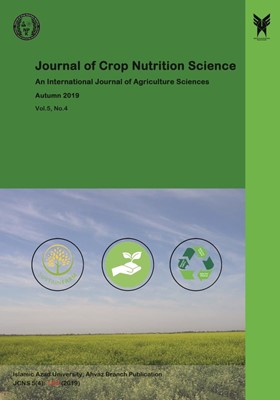-
-
List of Articles
-
Open Access Article
1 - Assessment Effect of Different level of Nitrogen Fertilizer (Urea Source) and Interval between Irrigation Round on Crop Production of Sorghum (Sorghum bicolor L., cv. Speed feed)
Bahareh Jahangiri Mojtaba Alavifazel Mohamad Reza Dadnia -
Open Access Article
2 - Assess Effect of Biological Phosphorous Fertilizers and Micro Elements (Boron and Manganese) on Alfalfa Growth Curve Indices
Maryam Khirkhah Hamid Madani Ghorban Normohammadi Mani Mojadam -
Open Access Article
3 - Phytochemical Responses of White Savory (Satureja mutica Fisch and C.A.Mey.) to Foliar Application of Seaweed Extract and Ecormon Fertilizer
Saeid Reza Poursakhi Hossein Ali Asadi-Gharneh -
Open Access Article
4 - Assess Effect of Nitrogen Fertilizer and Phosphorous Biofertilizers (Azospirillum and Pseudomonas) on Barley Crop Production and Seed Protein Content
Tahereh Hasanabadi Hamideh Khalaj Mohammad Reza Ardakani Maryam Delfani -
Open Access Article
5 - Evaluation Effect of Different Level of Vermicompost and Manure on Physiological Parameters of Cowpea (Vigna unguiculata L.)
Ahmad Zalaghi Seyed Kivan Marashi Mani Mojadam -
Open Access Article
6 - Integrated Effect of Nitrogen Fertilizer and Vermicompost on Quantitative and Qualitative Traits of Sorghum (Sorghum bicolor L.) Under Water Stress Situation
Seyedeh Zohreh Hashemi saeid Zakernejad Khoshnaz Payandeh
-
The rights to this website are owned by the Raimag Press Management System.
Copyright © 2021-2025







